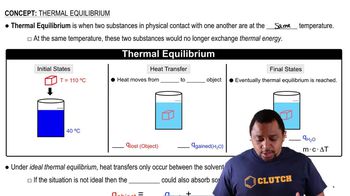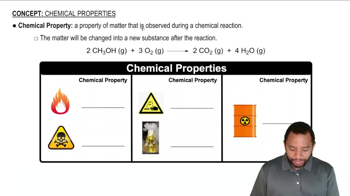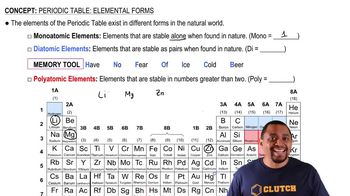Give the chemical symbol or name for the following elements, as appropriate: (f) Sb (g) Pb (h) Br (i) V (j) Hg.
A solid white substance A is heated strongly in the absence of air. It decomposes to form a new white substance B and a gas C. The gas has exactly the same properties as the product obtained when carbon is burned in an excess of oxygen. Based on these observations, can we determine whether solids A and B and gas C are elements or compounds?
 Verified step by step guidance
Verified step by step guidance
Verified video answer for a similar problem:
Key Concepts
Thermal Decomposition

Identification of Gases by Properties

Distinguishing Elements from Compounds

Give the chemical symbol or name for each of the following elements, as appropriate: (a) rhenium (b) tungsten (c) cesium (d) hydrogen (e) indium
Give the chemical symbol or name for each of the following elements, as appropriate: (f) As (g) Xe (h) Kr (i) Te (j) Ge.
Zirconia, an oxide of zirconium, is often used as an affordable diamond substitute. Just like diamond, it is a colorless crystal which sparkles under sunlight. Which of the following physical properties do you think would help in differentiating between diamond and Zirconia—melting point, density, or physical state?
In the process of attempting to characterize a substance, a chemist makes the following observations: The substance is a silvery white, lustrous metal. It melts at 649 °C and boils at 1105 °C. Its density at 20 °C is 1.738 g/cm3. The substance burns in air, producing an intense white light. It reacts with chlorine to give a brittle white solid. The substance can be pounded into thin sheets or drawn into wires. It is a good conductor of electricity. Which of these characteristics are physical properties, and which are chemical properties?
The radius of an atom of tungsten (W) is about 2.10 A . (a) Express this distance in nanometers (nm). Express this distance in picometers (pm).
